What are weeds?
Weeds are plants that grow in spaces where they are not wanted. Although most can be invasive and need to be controlled, many of these weeds are highly nutritious and beneficial to both us, humans, and our flocks.
They are packed with nutrients and vitamins and are free for the forager to pick because there are high chances that at least one of them grows within or around your property.
When freely roaming, chickens will pick around and eat plenty of fresh green leaves and insects that they find on the ground or on trees.
Feeding weeds to your chickens ensures the provision of many essential nutrients and most importantly, a major boost in their health.
Let’s have a detailed look into a few weeds that chickens love to eat.
What Weeds Can Chickens Eat?
1. Clover
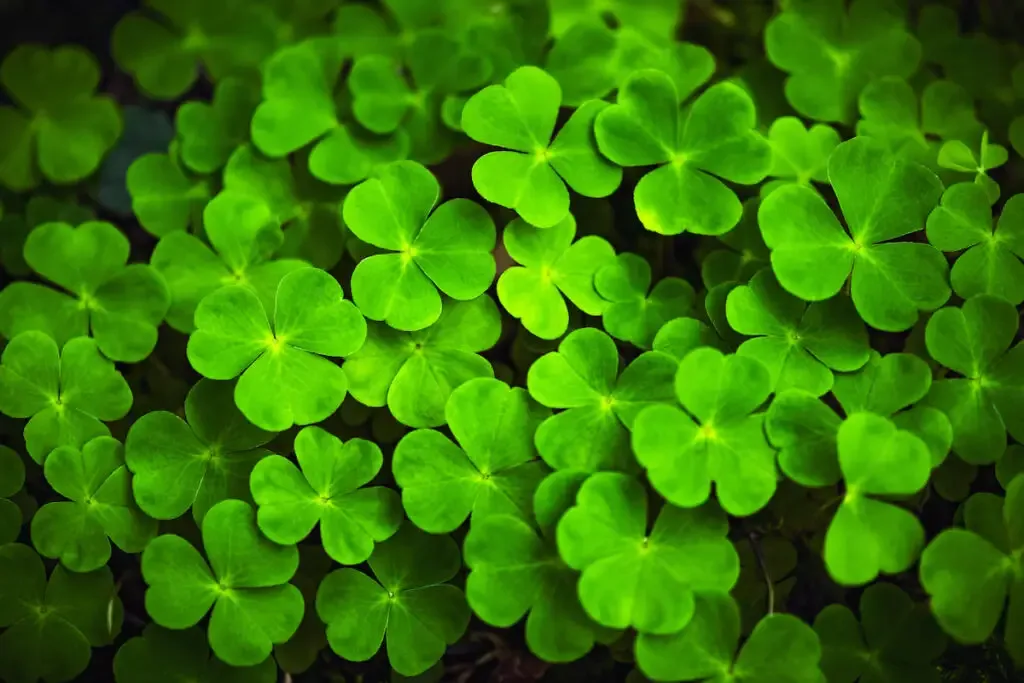
Clovers are a chicken’s favorite weed. They are highly nutritious and serve as excellent forage substitutes when the grass is not enough for your flock. Clovers are in the red, white, and purple varieties, but all have the same nutritional properties.
They are rich in calcium, niacin, Vitamins A and B, potassium, proteins, and iron. Clovers are detoxifiers as well and help maintain and stimulate the livers and digestive tracts of your chickens.
Also being an anti-coagulant, it ensures good respiratory and circulatory health.
Some say that they are not safe for chickens because they contain coumarin, a blood thinner compound but this compound only turns toxic when the clover gets moldy. Because of this, it is important to feed them to your chicken fresh clover.
Clover also has isoflavone, a compound that could affect an animal’s reproductive system. This only happens when the animal overfeeds on the clover, making it necessary to make sure not to overfeed.
2. Chickweed
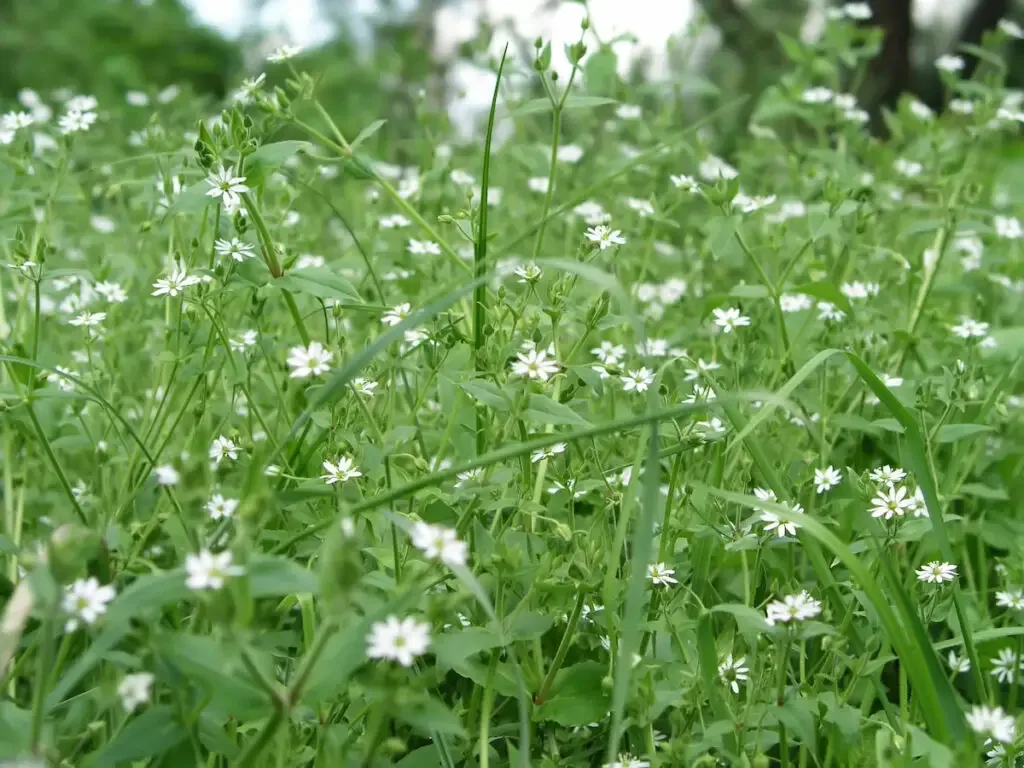
As implied by the name, chicken love chickweed. This weed grows well in gently disturbed environments like lawns, gardens, fallow fields, edges of paths, and forests.
You may, however, not find it near your hens’ house because they love it, and will eat every inch of it as soon as it sprouts.
The chickweed is characteristically soft, small, low, and easy to digest, making it a chicken’s favorite because of the ease of grazing, even for little chicks.
Chickweed is rich in minerals and fats, including calcium, potassium, magnesium, zinc, iron, manganese, silicon, and copper. These minerals strengthen the chicken’s health, as well as ensuring the production of high-quality, nutrient-rich eggs.
The omega-6 fatty acid, the healthier/anti-inflammatory type of omega fatty acid, is also abundant in chickweed. This is the type of fat that occurs in leaf fats and is concentrated in the meat and eggs of animals that feed on grass and other leafy plants.
3. Dandelions
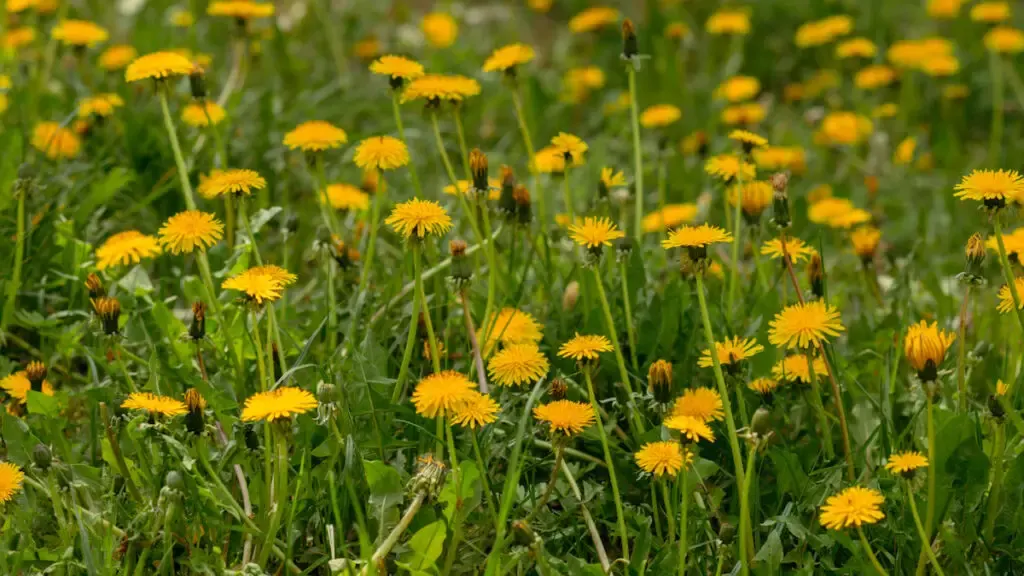
Dandelions are entirely edible for both humans and chickens.
It is advisable to uproot them and toss them into the chickens’ coop and the chicken will enjoy eating the flowers, leaves, stems, and roots. This way, you will have gotten rid of the weed and at the same time feeding your chicken high nutritious feeds.
Dandelions are a great source of calcium, an essential mineral for laying ducks and hens.
They also contain fiber, vitamins A, B, C, E, and K, iron, magnesium, potassium, phosphorus, and zinc, all of which are essential for the health of the chicken.
4. Common Nettle
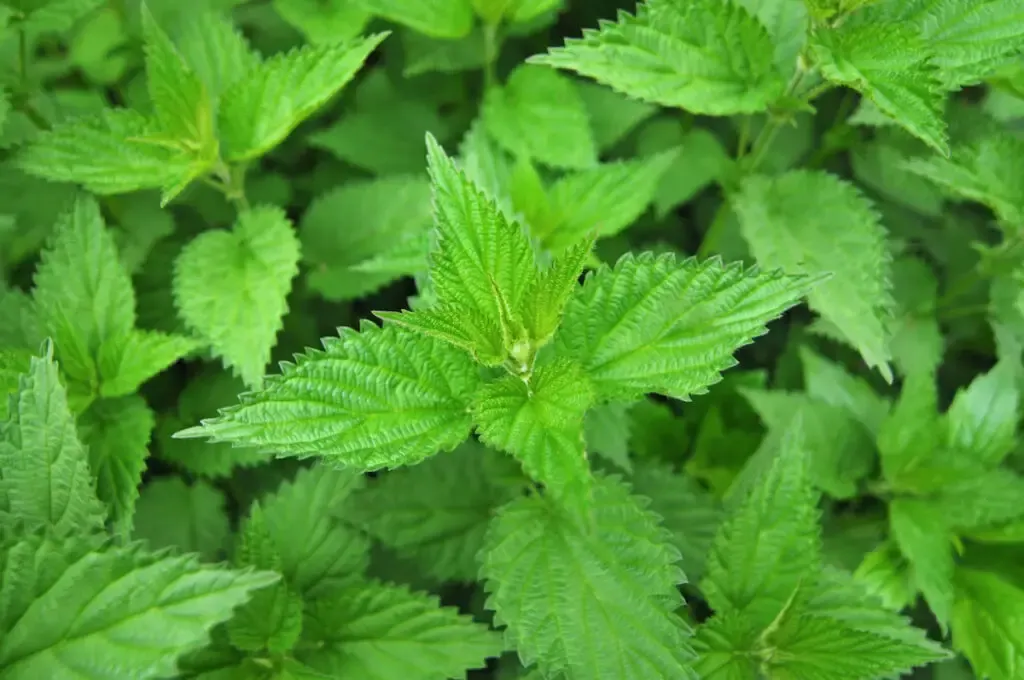
Also called the stinging nettle, this perennial plant thrives in damp soil. They are highly nutritious and can be recycled to make an excellent chicken feed, which subsequently supplements the chicken’s nutritional needs.
The nettle has a high amount of vitamins A, C, and D, as well as minerals like iron, potassium, manganese, and calcium. Additionally, it has 9-21% fiber and 21-23% protein.
Incorporating nettle into your chicken’s feed will make it achievable to raise the chicken’s protein intake by 15-20%, and the vitamin intake by 60-70%. Other green feed requirements can also be reduced by close to 30%.
Some poultry enthusiasts relate using nettles as feed supplements for the chicken to improved health, larger eggs, more eggs, and better-colored yolks.
If you have, however, noticed, some chickens don’t like eating them because of their stinging hairs, you can prepare them by soaking the leaves in hot water for about 10 – 20 minutes, then chop them or blend them with other feeds for your chickens.
5. Common Purslane

Also known as the red root or parsley, this succulent-looking weed is very tasty and great for your chicken. It thrives in poor soil, such as in sidewalk cracks and patios, and can withstand drought, making it suitable for hot and sunny climates.
The purslane has a bright red stem that spreads across the ground, with a bulk of small, green, and succulent leaves. It blooms in the summer with yellow or pink flowers that only open for a short while, mostly in the morning.
Purslanes are low in fat but are rich in iron, and vitamins B and C. incorporating them in your chicken’s feed will therefore improve the egg quality, as they are enriched with omega-3 oils.
Significantly, it also improves egg production and weight.
6. White Goosefoot
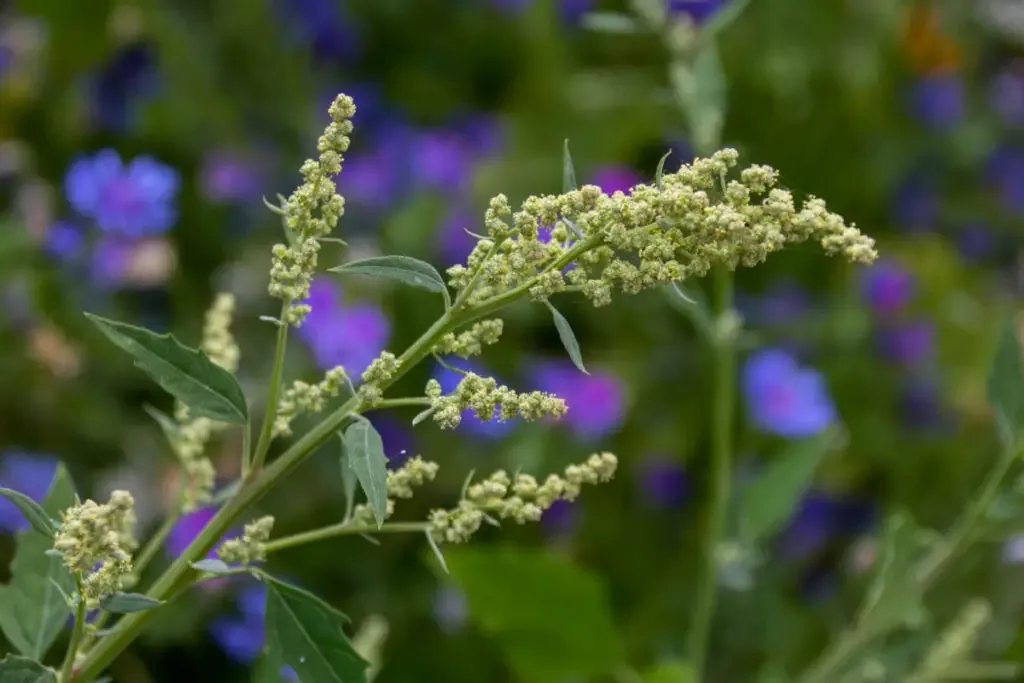
Also known as Fat Hen, this green weed is found around farming fields and edges.
With this fact in mind, it is, therefore, necessary to enquire from the farm’s owner if they have sprayed the weed with any chemicals, such as insecticides or pesticides, before giving it to your chicken to avoid the introduction of toxic substances to the chicken.
The white goosefoot is rich in Vitamin A, potassium, calcium, and phosphorus, and is also a great source of trace minerals, proteins, B-vitamins, vitamin C, iron, and fiber.
7. Bee Balm

Though not considered a weed, the bee balm grows and spreads like one and they are a chicken’s favorite.
It can be found in most gardens and is outstanding for its beautiful purple-pink flowers. Its leaves can be boiled into a healthy tea having anti-bacterial properties and is used to clear respiratory problems for both humans and chickens.
The chickens enjoy both the leaves and the flowers.
8. Plantain
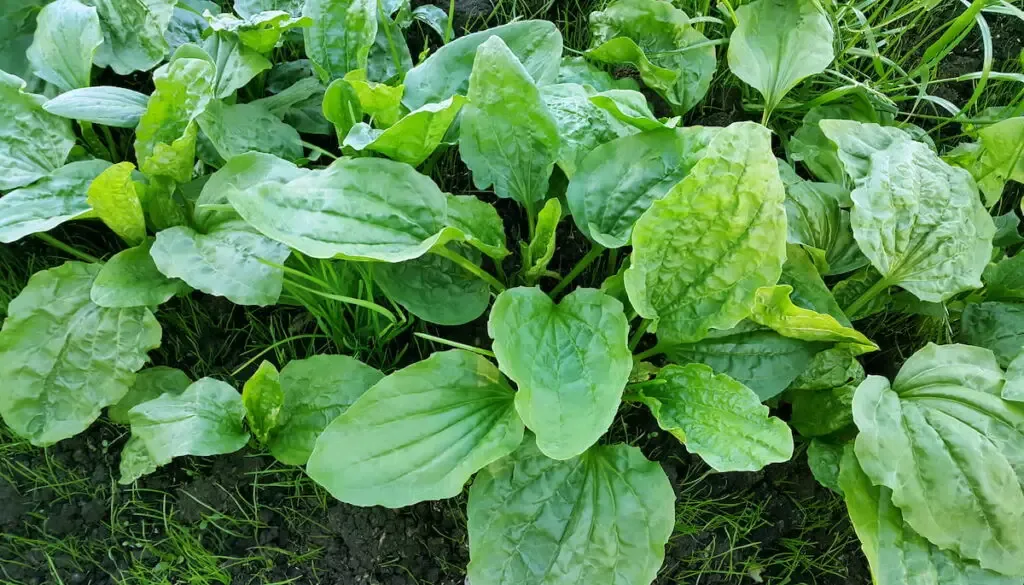
Plantains are closely related to bananas, which come in leaf form and pop out of sandy soil. They are best fed to chickens in moderation, without peels, to avoid the accumulation of excess natural sugars that could be detrimental to the chicken’s health.
Mostly said to be one of the best weeds to have on your property, plantains are characterized by big and glossy heart-shaped leaves that are a chicken’s favorite. It is also good and healthy for people to eat because of the additional healing properties.
9. Wild Strawberry
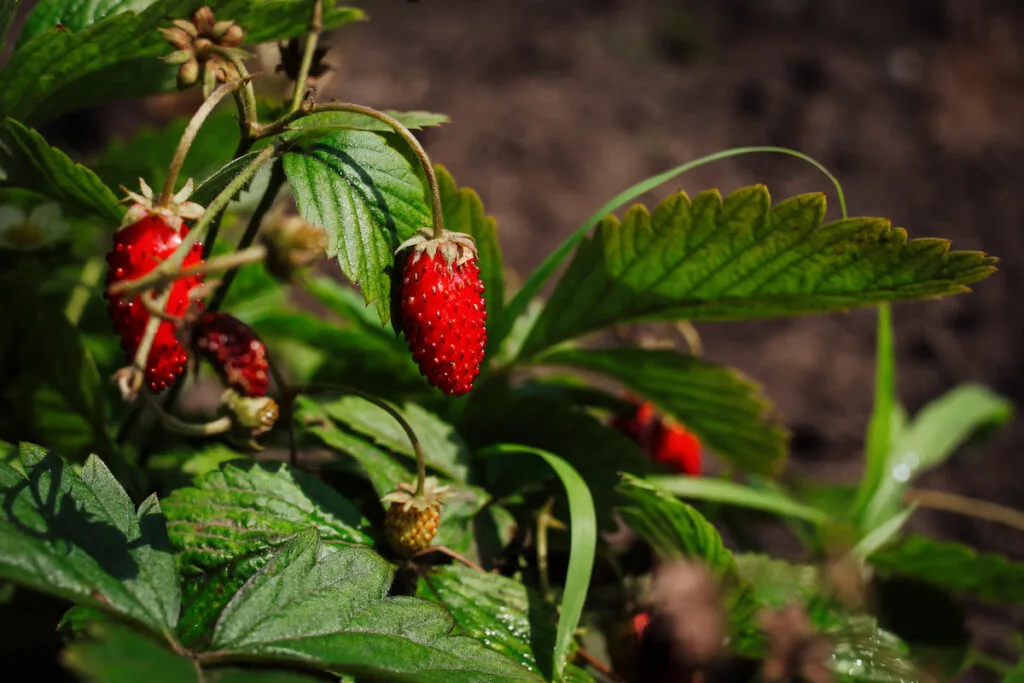
Chickens love cultivated strawberries of course, but they find wild strawberries much tastier, making strawberries another favorite.
As soon as they spot a wild strawberry within your property, they will always go to that spot, hunting for the wild berries and squabbling over them.
The wild strawberry has trace elements, alongside vitamins A, B9, and C. They are also rich in antioxidants and have small quantities of quercetin, an inflammatory agent.
The chickens eat the wild strawberries from their tops, the fruit itself, and even the leaves. Do not, however, feed your chicken with over-ripe strawberries because they could introduce molds and other toxic substances to your chicken.
10. Bittercress

The bittercress is a plentiful weed that thrives well in cooler weather. Sometimes classified as the best tasting of winter seeds, the bittercress is characterized by finely lobed leaves that grow in a symmetrical fashion.
They are commonly found in most gardens all winter long
11. Beautyberry

The beautyberries are not that nutritious or beneficial to chicken, but the chicken is always happy to keep busy plucking the bright purple berries off their stalk.
They really seem to enjoy and love it.
Benefits of Feeding Weeds to Chickens
- Cost-cutting – utilizing weeds for your chicken feed helps you cut costs and save on the money meant for chicken feeds. The more free plants growing in your yard your hens can eat, the less expensive feed they will need.
- Double duty – weeding your garden can sometimes be a task often flagged off to another day, but it is much more refreshing and motivating when you kill two birds with one stone. Let your chicken roam freely as they look for weeds, making your yard look great, while they have their highly nutritious feeds in green.
- As in the case of uprooting weeds and feeding them to your chicken, it gives you a reason to maintain your garden and landscaping so it is never left looking shaggy and neglected.
Other Weeds For Chickens
There are a lot of other weeds safe for chicken including smartweed, oxalis, prickly lettuce, lamb’s-quarter, and yellow dock.
Conclusion
Weeds are highly nutritious to chickens and feeding them should be emphasized because they ensure the development of a healthy chicken.
The best way to let them feed on the weeds is to let them roam around freely within the property and they will naturally watch out for the weeds of their choice and devour them till satisfaction.
Chickens are never picky about their food, so they may go tasting every plant on the property. Therefore, if you feel like they have to be selective on a certain weed and spare others, then you should pick the weeds you specifically want your chickens to eat.
Resources
- https://suburbanhobbyfarmer.com/weeds-chicken-feed/
- https://www.ruralsprout.com/weeds-for-chickens/
- https://www.communitychickens.com/7-common-weeds-your-chickens-will-love/
- https://www.fresheggsdaily.blog/2013/03/the-down-and-dirty-on-feeding-clover-to.html
- https://www.heritageacresmarket.com/chickweed-for-chickens/
- https://www.fresheggsdaily.blog/2014/02/the-health-benefits-of-dandelions-for.html
- https://permacultureglobal.org/post_projects/3797
- https://cortijoblog.com/2012/07/30/feeding-pursulane-to-chicken-to-increase-the-omega-3-in-the-eggs/
- https://www.wildfooduk.com/edible-wild-plants/fat-hen/
- https://www.fresheggsdaily.blog/2012/05/top-ten-flowers-your-chickens-will-love.html
- https://www.fresheggsdaily.blog/2014/07/herbs-for-hens-bee-balm.html
- https://www.backyardchickens.com/threads/chickens-eating-plantains.811593/
- https://cluckin.net/can-chickens-eat-strawberries-and-other-types-of-berry-fruit.html
- https://www.growveg.com/guides/useful-winter-weeds-chickweed-bittercress-and-henbit/
- https://www.mentalscoop.com/what-to-plant-for-free-chicken-food-weeds-berries-and-plants/
- https://www.raising-happy-chickens.com/identifying-weeds-for-chickens.html

